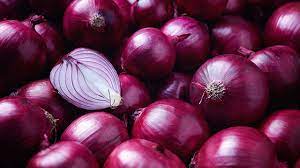
Are you in need of in-depth knowledge on onion and garlic production? If yes, we are a call away. Contact us for: Onion seedlings, Garlic seedlings, Germinated garlic cloves, Farm planning services, Soil testing, training on onion and garlic growing, Drip irrigation installation and maintenance, Agronomic support, Onion and Garlic value pack and Farm management. For free consultation, placing orders or booking a visit with an agronomist, please contact us via Call or what’s app +254703982228, Email: Info@oniondoctor.co.ke. You can also check out our social media handles for daily updates on TikTok: https://www.tiktok.com/@oniondoctorke?_t=ZM-8wmsTu0qumO&_r=1 Instagram: https://www.instagram.com/oniondoctorke?igsh=MTVoaHF3aWUydTJzaQ==Facebook:https://www.facebook.com/share/16SwgYn2dG/ Youtube:https://youtube.com/@oniondoctorke?si=u5Jnd-r0qU9UDYqL and Twitter: https://x.com/OnionDoctorKe?t=FR3JXlS_oN1vjjUgAtfyzg&s=09
Embark on a successful journey of onion farming in Kenya with the expert guidance of Onion Doctor. Learn the essential steps, from seedbed preparation to transplanting, and discover the key practices that lead to maximum yields. This comprehensive guide is your gateway to successful onion cultivation.
Onion seeds are first grown on a raised seedbed for germination and then transplanted to the main field for harvest. It is encouraged to prepare a seedbed two to three weeks before sowing seeds near the planting site to make it easier during transplanting.
Making Seedbed For Onion Farming The following guidelines are on how to make a seedbed for onion farming:
1. Prepare a raised seedbed of 12 cm wide with your chosen length. It should be in the shade to protect the seedlings from direct sunlight.
2. Add organic fertilizer and mix the soil.
3. Irrigate the raised seedbed one day before sowing the seeds.
4. On the seedbed, make rows of 15 cm apart and drill seed thinly to a depth of 1 cm.
5. Cover seeds using soil and mulch for 7 to 10 days to germinate.
6. Water the seedbed daily in the morning and evening. After the germination, remove the mulch to allow the seedlings to grow upright and strong.
How to Grow Onions in Kenya Drain the Seedbed if There Are Excess Water When the farmer approaches the day of transplanting seedlings, it is advisable to reduce the watering of the seedbed to make the structure of the seedlings strong. Also, remove the shade that is covered in the seedbed to get the seedlings more used to stronger sunshine.
Irrigate the Seedbed Before transplanting, the seedbed is irrigated to avoid damage to seedlings when pulling them from the seedbed. The field is watered on the day you intend to transplant the seedlings. In Kenya, onions grow well in well-drained soil, fertile sandy loam soil, and non-compacted soils with a PH of 6.0 to 7.0. Onion farming requires an ideal temperature of 13 to 24 degrees, especially during germination, which is helpful to the onion seeds.
Prepare and Plough the Land The land is prepared and ploughed one month before transplanting onion seedlings. The soil should be reduced to fine particles for two weeks before transplanting to make planting easier. Put the ripe animal manure in the field. This will make the soil rigid and increase moisture retention for an extended period. Thereafter, mix the organic fertilizer well with the soil and make furrows for planting onions.
Transplanting Transplanting of onion seedlings is done six to eight weeks after sowing seeds. Similarly, you can transplant onions when they have produced three to five well-formed leaves. It is done early in the morning or late in the evening when the sun is not burning hot. Using a shovel, uproot seedlings from the seedbed and plant them in the already prepared land for onions. The seedlings are planted in 2.5 to 3 cm deep trenches at a space of 30 cm between rows and 8 to 12 cm from one seedling to another.
Organic manure is added to the holes when seedlings are planted. Select healthy seedlings and free from pests from seedbed to plant and then firm up the seedlings with the surrounding soil. After you are done with transplanting, water the seedlings and continue watering in the morning and evening until the seedlings hold well in the soil.
Onion Doctor supports small holder farmers across Africa with quality and affordable Onion and Garlic seedlings, Onion seedlings, Farm planning services, Soil testing, Drip irrigation installation and maintenance, Agronomic support, Onion and Garlic value pack, Farm management, E-extension and on-farm training for farmers to optimize on yields and get maximum profits.